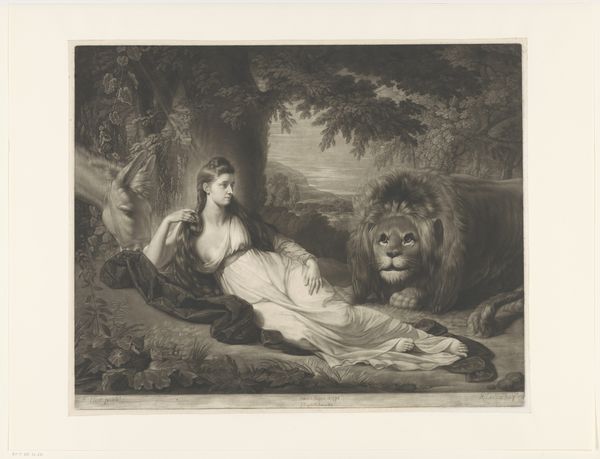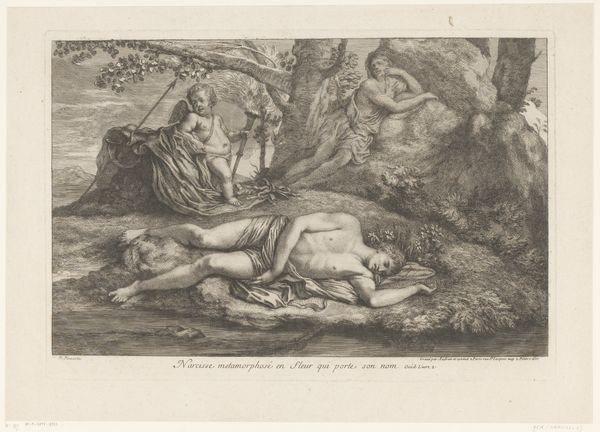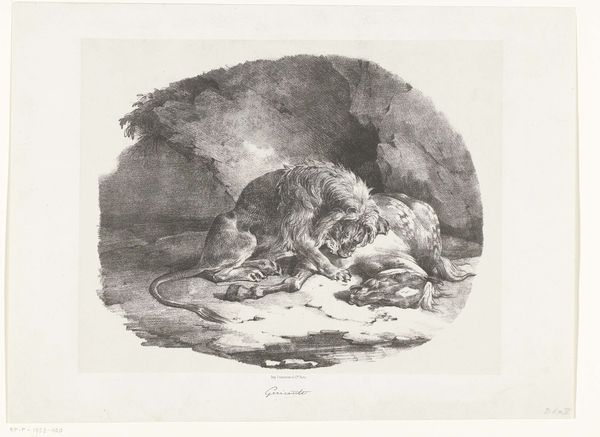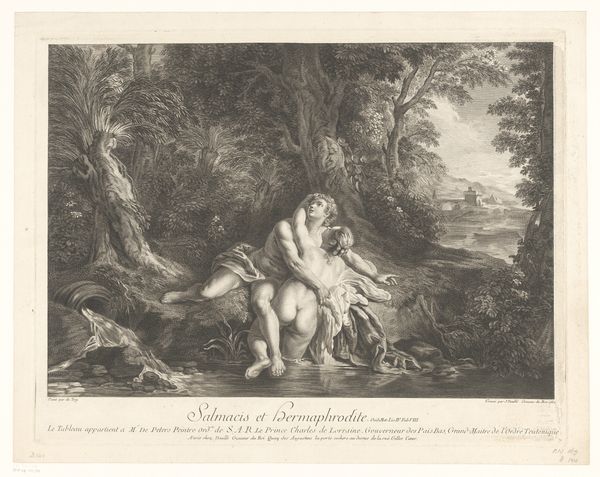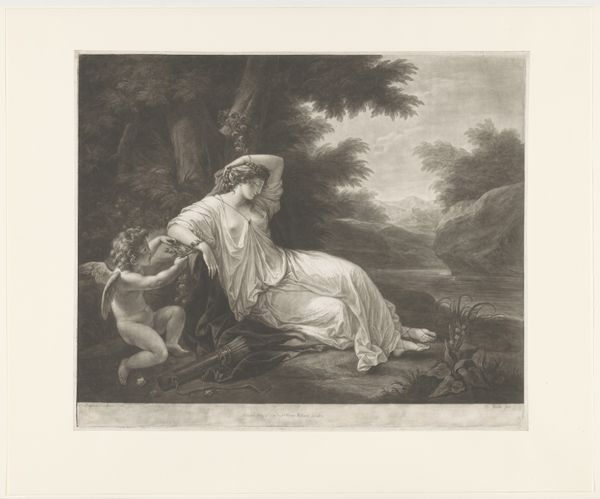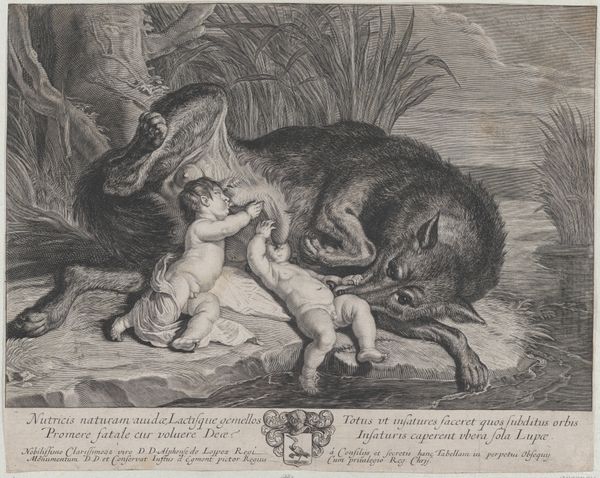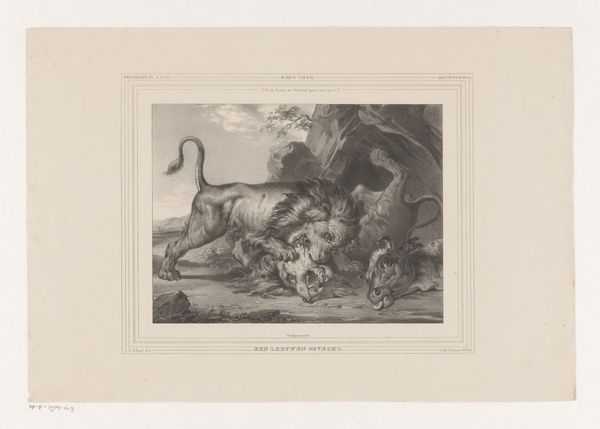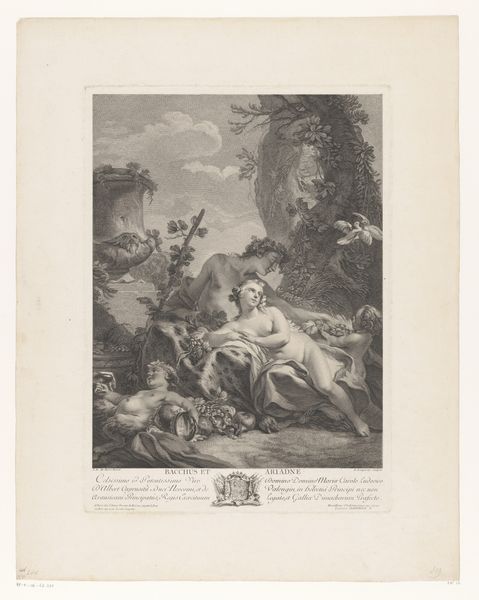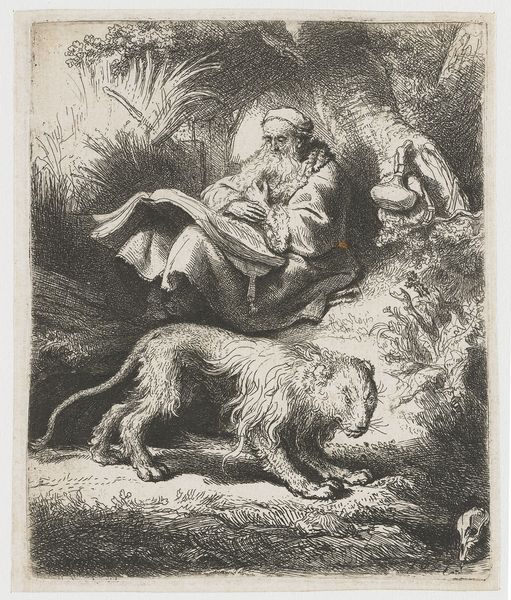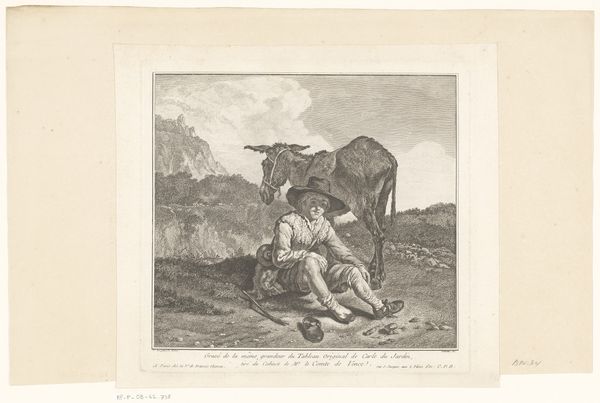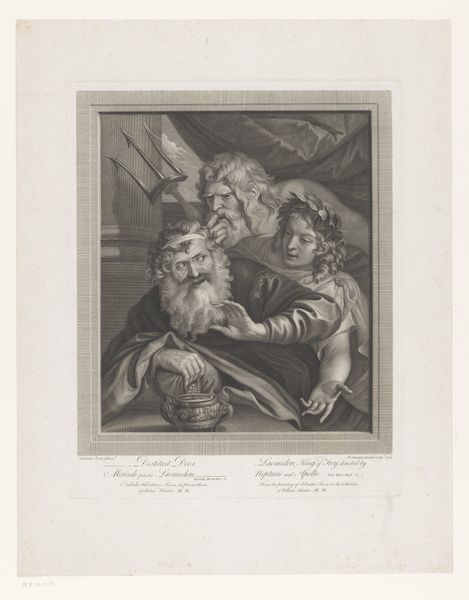
Dimensions: height 431 mm, width 532 mm
Copyright: Rijks Museum: Open Domain
Editor: Here we have William Walker’s “Drie Spelende Leeuwen,” or “Three Lions at Play,” from 1769. It's an engraving. What I find immediately striking is the dramatic use of light and shadow - it feels almost theatrical, like a stage set for these powerful animals. What do you see in this piece, especially given its historical context? Curator: It's important to remember that images like this played a vital role in shaping public perception of the natural world. This print dates from the late 18th century, when scientific illustration and artistic representation were often intertwined. The lion, a traditional symbol of power and majesty, is here domesticated, rendered as a subject for polite contemplation, even entertainment. Does this domesticated representation influence its majesty? Editor: That's interesting - a kind of visual "taming" of nature for a European audience. It’s quite different from how lions might have been perceived in other cultures. Were prints like this common? Curator: Mass-produced engravings were crucial in disseminating knowledge and cultural values at the time. This piece suggests an era grappling with how to classify and present the animal kingdom to the European public. What power dynamics can you read in such image making? Editor: So, it's not just a depiction of lions; it’s also reflecting broader social and political ideas about control and the relationship between humans and the wild. I guess these depictions have shaped our understanding about these animals. Curator: Exactly. Images like Walker’s were integral to forming those perceptions. The popularity of such works reinforced a specific view of the world. Editor: This has been really eye-opening; I’ll definitely look at similar animal depictions with a more critical lens now. Curator: Excellent. It's about understanding the politics inherent in what seems like simple representation.
Comments
No comments
Be the first to comment and join the conversation on the ultimate creative platform.
